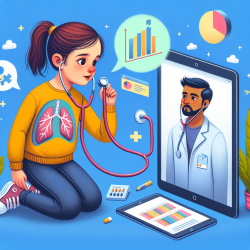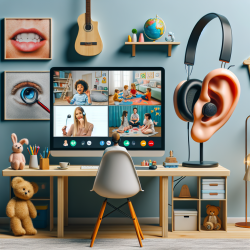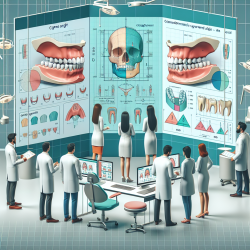The rise of telehealth has revolutionized the way healthcare is delivered, especially for children and adolescents with chronic pulmonary diseases like asthma and cystic fibrosis. A recent systematic review titled "Telehealth for children and adolescents with chronic pulmonary disease: systematic review" highlights the impact of telehealth on various health outcomes for this population. This blog aims to help practitioners improve their skills by implementing the outcomes of this research and encouraging further exploration in this field.
Key Findings from the Systematic Review
The systematic review analyzed twelve randomized clinical trials (RCTs) published between January 2010 and December 2020. The interventions included:
- Mobile phone applications
- Web platforms
- Mobile telemedicine units
- Software with electronic records
- Remote spirometers
- Active video games
Positive Outcomes
The review found several positive outcomes associated with telehealth interventions:
- Improved adherence to treatment
- Enhanced quality of life
- Better control of symptoms
- Improved physiological variables for mobile applications and game platforms compared to usual care
Areas for Improvement
Despite these positive outcomes, the review also identified areas where telehealth did not show significant improvements:
- No reduction in emergency department visits
- No significant change in hospitalizations
- Considerable heterogeneity among studies
Practical Applications for Practitioners
Implementing Mobile Applications
Mobile applications were found to be particularly effective in improving adherence and quality of life. Practitioners should consider integrating mobile apps into their treatment plans for children with chronic pulmonary diseases. Apps that offer reminders, educational content, and symptom tracking can be particularly beneficial.
Using Game Platforms
Active video games can serve as an engaging way to promote physical activity and improve physiological outcomes. These platforms can be especially useful for younger patients who may find traditional exercise routines monotonous.
Monitoring and Feedback
Remote spirometers and other monitoring tools can provide real-time data, allowing for timely medical feedback. This can help in better managing symptoms and adjusting treatment plans as needed.
Encouraging Further Research
While the current findings are promising, further research is needed to compare telehealth with face-to-face care and to identify the most effective tools for routine care. Practitioners are encouraged to participate in or initiate studies that explore these aspects.
Conclusion
Telehealth has the potential to significantly improve the management of chronic pulmonary diseases in children and adolescents. By integrating mobile applications, game platforms, and monitoring tools, practitioners can enhance treatment adherence, quality of life, and symptom control. However, continued research is essential to fully understand the long-term benefits and limitations of telehealth interventions.To read the original research paper, please follow this link:
Telehealth for children and adolescents with chronic pulmonary disease: systematic review.










